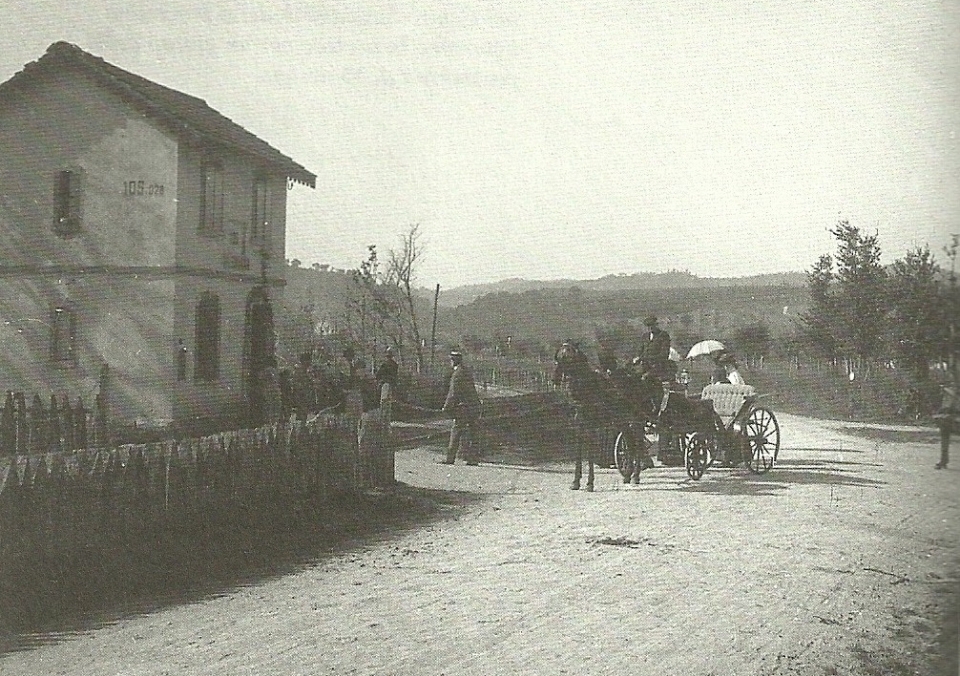In this article we want to narrate two stories concerning two people very famous of Mocaiana. Different stories of life, but at the same time very significan
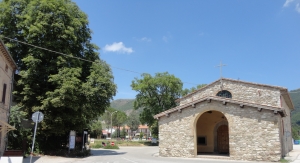
La Chiesa di Mocaiana
MOCAIANA – 1950s-1960s. Another society, another youth, another mentality, simply another life. An existence based on work and domestic maintenance. Since children, the priority was to learn a trade. You could be a tailor, a carpenter or you could work the fields with your parents. From the point of view of the landscape, Mocaiana, at those times, was only formed by those few ancient houses where today live those people who have lived in that period.
In this article we want to narrate two stories concerning two people very famous of Mocaiana. Different stories of life, but at the same time very significant.
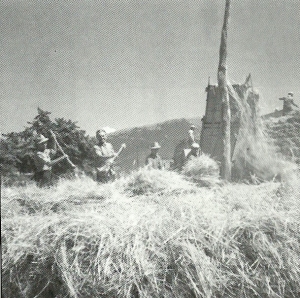
Trebbiatura
Ubaldo Tosti
We start from the story of Ubaldo Tosti, the “tailor” of Mocaiana. Ubaldo, better known as Baldino, lived with his father, who has always lived as electrician, his mother, who has always devoted to her family, and two smaller sisters, Emilia and Iolanda, who have worked with him in his workshop. At those times, the education was quite limited, in fact Ubaldo attended only the fifth grade before starting to work.
The other possibility was the “starting”, but he decided to learn immediately a job, despite his father wanted him to choose the other option. Ubaldo could have followed his father’s tracks, but despite he liked the trade of mechanic, he worked as a tailor to Raggio, a small hamlet near Mocaiana.
His working career has not been easy because he didn’t earn anything and above all, unlike our days, people mainly purchased clothes during the festivities and in those periods we mostly worked. At a certain point there was a turning-point: the move to Rome for two years. It was an important step in the life of Ubaldo, who started to earn the first wages and experimented how the life in a big city was completely different as regards the life in Mocaiana.

Il viale dei Cerquoni
Thanks to the experience acquired in that period, Ubaldo decided to work independently, once he came back to Mocaiana. Most of the day was characterised by work, but Ubaldo, as well the other guys who lived there, was able to cut out some small moments of relax playing football with handcraft balls made by them or playing with the “ruzzola”.
On Saturday evening, he went to dance the ballroom dancing all together until midnight, this was the curfew of that period. At the end Ubaldo, despite the life was not easy, have acknowledged to have been lucky to have a cultivated field which yielded the greatest part of the provisions and a father who has always worked also outside Gubbio to be able to give a maintenance to his family.
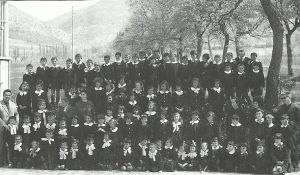
La scuola di Mocaiana in una foto storica
Maria Giuseppina Pascolini
The second story that we narrate is that of Maria Giuseppina Pascolini, the “teacher” of Mocaiana. Maria Giuseppina, better known as Pina, lived in the centre of Gubbio, in via Baldassini. This condition has allowed her to be able to go regularly to school and to study. At those times, this was a great fortune and it gave toy the chance to be able to do a more profitable work.
She moved to Mocaiana in 1958 and the adaptation to a new reality was not so traumatic. That’s true, the life in the city is different as regards the country because the development in Mocaiana was slow in that period, but Pina has not had difficulty to adapt herself, because she has always led a quiet life, she often didn’t go out and her hobbies was the sewing and the embroidery. She chose the teacher career for an unusual reason: the first year of high school she was rejected and considering that this last was private and the taxes to sustain too expensive, she decided to do the private exams to become a teacher and she passed them.
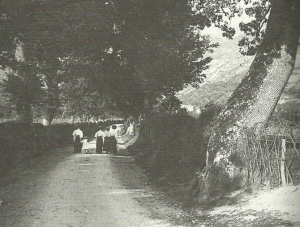
I Cerquoni nei primi anni del secolo scorso
At the beginning, it was an expedient, but at the end, for her own admission, this career gave her a lot of satisfactions. To have taught for many years has allowed her to face very different scholastic situations. At the start, she had different charges in many hamlets, not only around Gubbio, but also towards Perugia, Foligno, Scheggia, before working permanently to Mocaiana. There, the school was become full time, so we are already in the 1970s.
This change was a great step-change for the education because the teachers worked in couple in one class, the organisation of the work was different as regards that in an only class formed by pupils who went from the first to the fifth grade and they also gave great importance to the bureaucratic aspect. Her career in Mocaiana has been very long, she have been taught there for 25 years, she was lucky to teach with her brother, that was a different collaboration because they knew each other very well and they knew whether to behave the one with the other. This relationship, that can be defined brotherly, could be established also with the other colleagues thanks to the huge quantity of time in which they worked together.
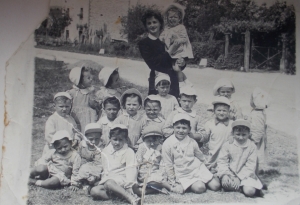
Foto storica 1957
The substantial difference in comparison with today concerned the interpersonal relationships. In the past a lot of things were shared, the groups of friends were always very numerous and friendly without doing any distinction among people. Integrating in a new reality was easier and more funny.
Today, the guys form groups that not always interact among them and sometimes, it is difficult, above all at the beginnings, build a relationship of knowledge between two people who lived in different places, such as the city and the suburb, while, in the past, it was always beautiful share the moments of relax, fun and their own life experiences.
We deeply thank Ubaldo and Maria Giuseppina for their availability and enthusiasm with which they have told us their own lives.
Servizio a cura di Ilaria Stirati


